Having a tweet idea or publishing a few blogs is not a content strategy. If you want to attract followers, engage readers and improve business it’s important to know where you’re going and why. This means planning daily, weekly and monthly activities, prepping for important calendar dates, setting targets, having a strategy for each channel and managing everything seamlessly. Tired yet? It’s not surprising. Join us as we discuss what goes into a content marketing strategy.
So, You Think You’ve Got A Strategy?
According to Content Marketing Institute’s 11th Annual Content Marketing Strategy, just 43% of B2B marketers have a documented content strategy while 36% have an undocumented strategy. Let’s just stop right there. If you’ve documented your plan, well done. It’s a step in the right direction. If your strategy is undocumented, however, it’s time to sit on the naughty step.
The survey also revealed that 17% of B2B marketers have no content marketing strategy at all, but plan to put one in place over the coming months. That means almost 2 in 10 businesses have absolutely zero content strategy with 4% of B2B businesses also having zero content strategy and zero plans to implement one. Sigh.

This is surprising considering:
- 72% of companies say content marketing increases leads. If you don’t have a decent strategy in place, you could be missing out on essential revenue.
- 90% of consumers buy from brands they follow on social media. A multi-channel social strategy can boost brand awareness and engagement.
- 4/5 consumers use search to find local information. A poor strategy could see you miss out on 80% of your potential customers.
- 1/3 marketers use date to make content marketing decisions. If you have no plan or end game, you won’t know how to use your data effectively.
- Businesses that blog get 55% more website visitors than businesses that don’t. Blogging is a quick way to get people interested in your brand. And it’s easy to share across social media platforms.
The survey also revealed that just 7% of marketing experts think their company’s content is exceptional. And while many businesses do have some kind of strategy in place, the vast majority (43%) think their strategy is neither good or bad but is in fact simply ‘meh.’
Getting Into the Content Marketing Strategy Groove
In an industry set to be worth $412 billion by the end of 2021, ‘meh’ simply isn’t good enough. Add to this the digital demands created by 2020’s enforced lockdowns and you know you need to up your game. A content marketing strategy can help you to:
- Generate more quality leads
- Attract more traffic to your website
- Boost brand awareness and improve your digital reputation
- Improve customer engagement and loyalty
- Successfully promote new and existing products/services
- Attract people in your local area
Strategy is absolutely necessary *no excuses accepted*. So how can you find your groove in the content marketing strategy realm? Let’s take a closer look.
Phase 1: Market Overview
Whether you’re working with a content marketing agency like ourselves (hi there!) or are starting your strategy from scratch; it’s important to think about your brand offering and where you sit in the current market. Things to consider include:
- Current ranking for specific keywords – is your brand appearing in Google’s Search Engine Results Pages (SERPs) or are your competitors shining brighter? Why? Take notes from Google’s top results. For example, if you’re selling wedding cakes, note that the top results for wedding cakes are those who have optimised for local search. You can do this by creating a Google My Business Account, getting reviews from local customers, optimising for voice search or creating content around local events.
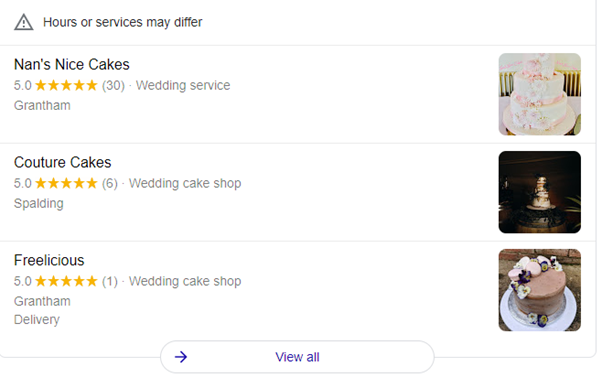
- Have you thought about market need? Are you communicating this properly?
- Do you know your competitors? How do your unique selling points compare to theirs? Is there anything you can do differently? Are your selling points obvious?
- What are your strengths and weaknesses? Perhaps you’re great at keyword research but terrible at creating a strategy around those necessary words. Going back to cakes, note how the keywords appear in the meta descriptions of top-ranking pages.
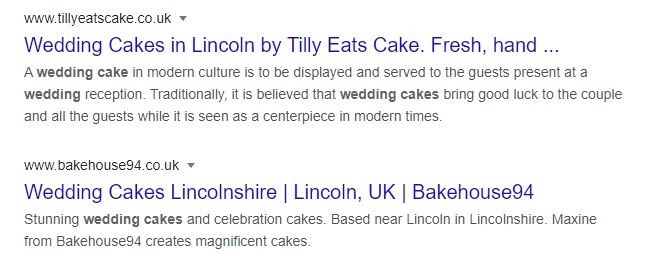
- What region are you targeting? And what’s your audience? This could be anything from high net worth individuals to event attendees. And what’s your demographic? Women? Millennials? CEOs? Etc.
Take Chime, for instance. As a challenger, digital only bank, their target audience is largely millennials. For this reason, they create content aimed at this group of people to improve their social relevance and boost engagement.
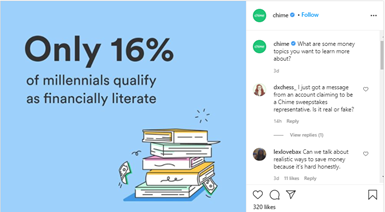
Likewise, Revolut knows that corporate responsibility matters to their millennial audience which is why they weave it into their content strategy.
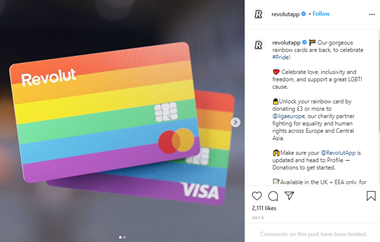
When answering these questions, you’ll probably find that gaps in your strategy start to emerge. But keep going. Knowing your place in the digital world is essential as it’ll help you position your content accordingly and fight harder to get eyes on your brand.
Request A Strategy Consultation
Phase 2: Setting Objectives
Knowing where you stand in the current market and who you’re targeting is one thing, but you also need to know why you get out of bed every day. All brands are different, so it’s important for you to think about what you want to achieve which is why setting objectives or KPIs is the next part of the strategy. Targets and goals could include:
- Improving brand recognition
- Improving customer retention
- Achieving better SEO rankings
- Enjoying higher social media engagement rates
- Getting more social media follows
- Boosting web traffic
- Managing your reputation online
- Improving online customer response
- Obtaining thought leader status
- Enhancing your influencer marketing strategy
And more…
This might seem overwhelming at first. But the best way to overcome a sudden rush of fear is to pour another coffee and set some specific Key Performance Indicators (KPIs). KPIs help to measure performance and give you a good idea if your strategy is going to plan. They also make everything a whole less scary and give you a step-by-step strategy to follow.
For example, your KPIs could be to:
- Get 100 more Facebook followers for your brand each month.
- Achieve 1000 e-book downloads in 6 months.
- Increase the time spent on specific pages by Q4.
- Boost lead generation 10% by Q1 2021.
Top tip: Make KPIs specific but don’t just pluck them out of thin air. Use tools such as Google Analytics to analyse current statistics and then think of a plan to improve rankings, downloads, leads or whatever it might be. Then, you can track what works and what doesn’t. Didn’t think making a content strategy was so technical, did you? Time for another coffee?
Don’t be afraid to get creative. Sometimes, the only way to meet new goals is to incorporate new ideas to revitalise your strategy. And there are many sources of inspiration as seen below.
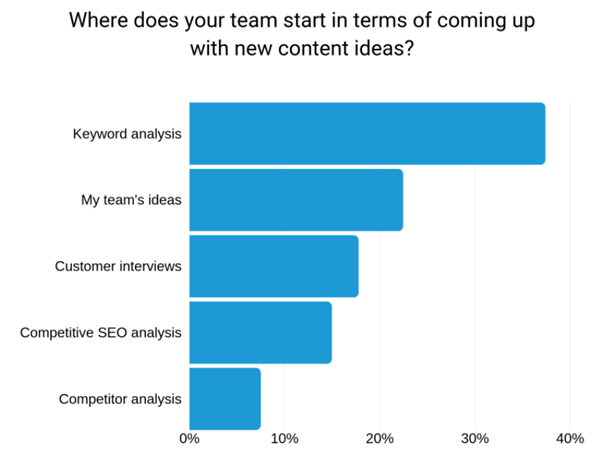
Phase 3: Defining the Brand
Brand identity is everything. It’s what sets you apart from the crowd and includes everything from colour schemes and logos to images and font styles. From a content marketing perspective, brand identity is also about tone of voice. While some brands are comical…

Others are renowned for expressive marketing and stunning photography…
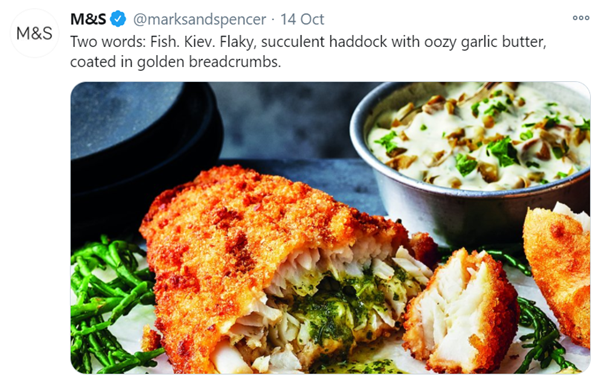
It’s all about consistency. After all, consistent representation of a brand has been seen to increase revenue by 33%. So, when creating a content marketing strategy it’s a good idea to think about words that summarise and describe your brand voice.
Think of it this way. If you outsource an article and it comes back full of colloquialisms and jokes, would you be happy? Or would you prefer to adopt a more professional tone? Don’t expect writers and agencies to guess. Document your content marketing vision from the start as this will help anyone collaborating with you later on.
It’s also worth thinking about how you want your brand’s tone of voice used in real-life marketing settings. Think about what your brand will and will not do when being portrayed through content, PR and social media marketing. For instance, you might decide your brand will use emojis and GIFs across your social channels.


And yes you can be a professionally serious brand offering a sense of fun on social media.

Or you might decide that pinned posts on Twitter should include an image or video to boost engagement. But that the rest of your posts can be a little more flexible. Remember, a pinned tweet with an image can boost retweets by 35%.
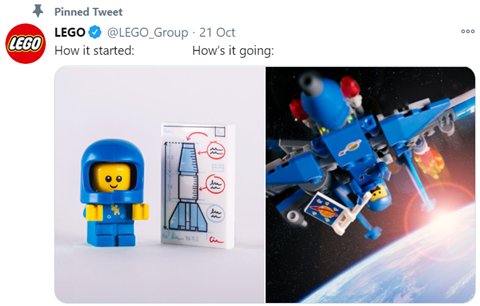
You can also think about more advanced content strategies like branded hashtags. These make it easier for consumers to follow your content and help you monitor hashtag use.
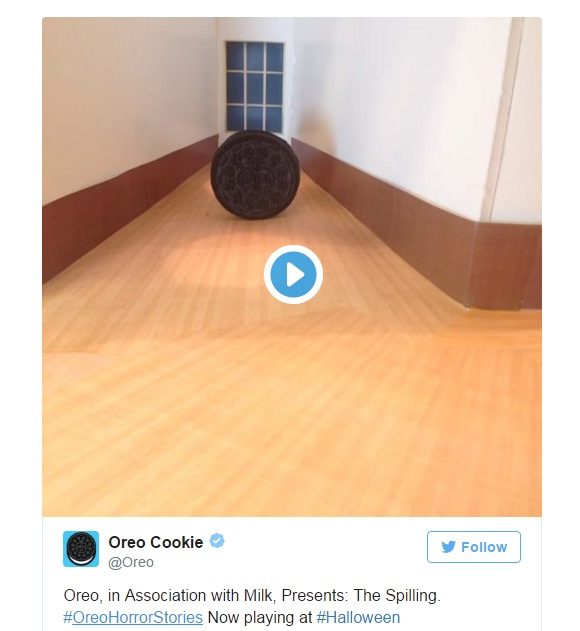
The best hashtag campaigns of all time
- #NationalFriedChickenDay by KFC
- #ShareACoke by Coca-Cola
- #LetsDoLunch by Domino’s Pizza
- #OreoHorrorStories by Oreo
- #WorthSaying by L’Oréal Paris
- #TweetFromTheSeat by Charmin
Phase 4: Defining the Channel Strategy
Want to be seen in the digital world? Scratch that. Do you want to be seen at all? Then it’s a good idea to have a multi-channel strategy! And this requires careful thought and attention. Things to think about include:
Your website
How’s it ranking? Do you have a keyword strategy in place? Are those keywords being used and monitored? Do you know what your highest ranking keyword is? Have you popped this into URLs, meta descriptions, content titles, content headers and throughout the body content?
If you’re sat here lost it’s essential to go back to the drawing board and look at your SEO strategy. SEO is a tried and tested way to boost content organically and revolves around having short and long-term keywords to work from. You can source these through various keyword generator tools such as Google’s Keyword Planner or by looking at what your competitors are doing. For long-tail keywords that result in conversions, you can look into Google Suggest or Google’s Related Searches found at the bottom of the SERPs.
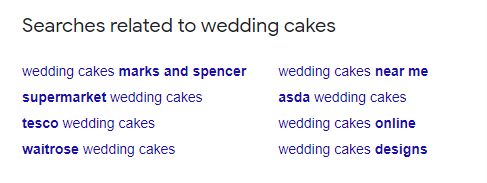
Your website strategy should also include populating a blog. Google loves fresh content, but you don’t have to start from scratch. Repurposing or updating existing content can also help. As there’s also a new kid on the block – Position Zero – it’s also worth writing question and answer content. This is because snippets are informational in nature. And in the words of SEO expert Neil Patel, “If your content doesn’t answer questions, it won’t get into the featured snippet. That’s all there is to it.

Google’s algorithms search through countless sites to find the content that will best answer a user’s questions. When the crawlers find it, they display the content in the form of a featured snippet, which makes it easier for people to locate the information they’re looking for. Type in ‘How to drive a car’ in Google, for example, and the Featured Snippet is a YouTube Pass Your Driving Test Series.
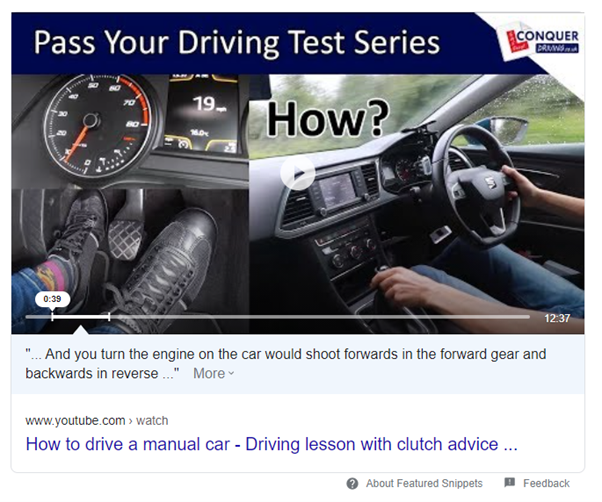
This shows how different sorts of content can feature including lists, how-to videos, written text and more.
Your social channels
The social channels you target will depend on your audience and demographics. That’s why it’s really important to complete step one – the market overview. Without this you can feel a bit lost at sea, especially as there are so many channels these days. While Gen Z love everything from Snapchat to Instagram and TikTok, Millennials remain loyal to Facebook. Think carefully about where to place your content and your content marketing resources.
Marvel is one brand targeting Gen Z hard on Instagram with their Disney + promotions which are of huge appeal on this specific platform.

Chipotle also excited Gen Z with their #GuacDance challenge. To celebrate National Avocado Day, Chipotle introduced a #GuacDance on TikTok, encouraging users to show off their love of guacamole through dance. The challenge generated over 250,000 submissions and 430 million video views during its six-day run.
“The campaign [is] TikTok’s highest-performing branded challenge in the U.S. The promotion result[s] in Chipotle’s biggest guacamole day ever, with more than 800,000 sides of the condiment served,” notes Mobile Marketer. “The quick-service chain’s avocado usage jump[s] 68% to 18,500 cases, or more than 420,000 pounds of the fruit, for National Avocado Day on July 31.”
When it comes to social media content, always:
- Have your target audience in mind
- Use the platforms most appealing to your audience
- Avoid the temptation to be on every single channel if you cannot manage the content
- Produce and schedule content to make your life easier
- Have any content approved in advance if you work for an industry where compliance matters
- Set KPIs and know what you want to achieve from each campaign
- Use the analytics tools of each platform to monitor campaigns
- Use social listening tools to keep an eye on content performance
- Engage by answering questions, resharing user generated content, starting conversations on social forums for your industry.
Contentworks Agency produces winning strategies for clients in the finance, tech, fintech and lifestyle spaces. Request a consultation now.
